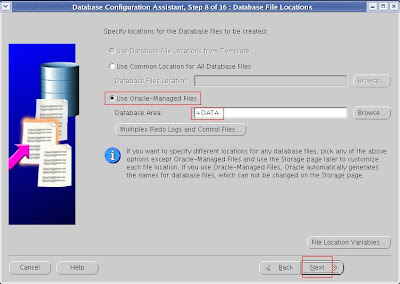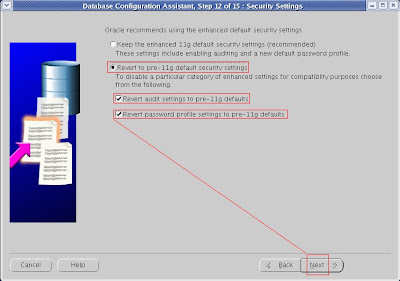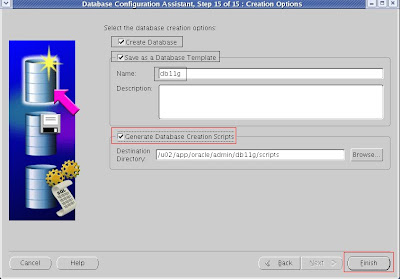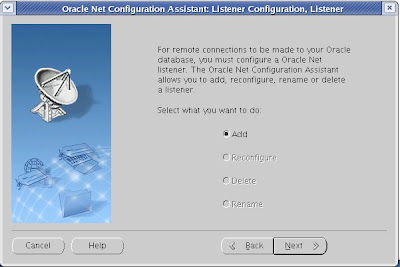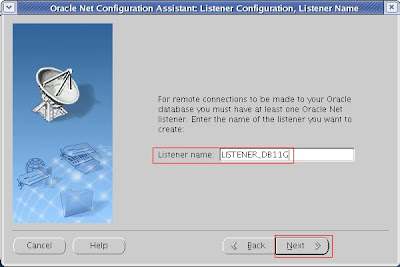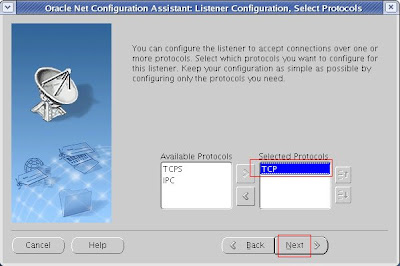

Friday, December 26, 2008
Wednesday, December 24, 2008
1Z-050 Oracle 11g New Features for Administrators: Certified
Most of the time the test is concentrated on new enhancements like
Virtual Private Database
ASM Enhancements
AWR Baselines, SQL Advisior, STS
DIAGNOSTIC_DEST
Direct NFS
Flashback archive
SQL Management Base
MEMORY_TARGET
(+) and a use full resource http://www.amazon.com/OCP-Oracle-Database-11g-Administrators/dp/0071496823 OCP Oracle Database 11g: New Features for Administrators Exam Guide (Exam 1Z0-050) (Osborne Oracle Press) which helps you to build your knowledge on Oracle 11g as well as in getting the Certification.
Good Luck
Ravi Prakash
Saturday, December 13, 2008
VMWare: Network Adapters
1. Virtual Network Editor.
 2. Summary Page - Listed available Virtual network
2. Summary Page - Listed available Virtual networkFriday, December 12, 2008
libawt.so: libXp.so.6: cannot open shared object file
libawt.so: libXp.so.6: cannot open shared object file
Operating System: RH Linux 5.3 64bit.
Issue: When running Sybase Central
$./scjview
Current thread: main
java.lang.UnsatisfiedLinkError: /u03/sybaseiq/shared/jre-1_42/lib/i386/libawt.so: libXp.so.6: cannot open shared object file: No such file or directory
at java.lang.ClassLoader$NativeLibrary.load(Native Method)
at java.lang.ClassLoader.loadLibrary0(Unknown Source)
at java.lang.ClassLoader.loadLibrary(Unknown Source)
at java.lang.Runtime.loadLibrary0(Unknown Source)
at java.lang.System.loadLibrary(Unknown Source)
at sun.security.action.LoadLibraryAction.run(Unknown Source)
at java.security.AccessController.doPrivileged(Native Method)
at java.awt.Toolkit.loadLibraries(Unknown Source)
at java.awt.Toolkit.<clinit>(Unknown Source)
at java.awt.Color.<clinit>(Unknown Source)
at javax.swing.plaf.metal.MetalTheme.<clinit>(Unknown Source)
at javax.swing.plaf.metal.MetalLookAndFeel.getCurrentTheme(Unknown Source)
at javax.swing.plaf.metal.MetalLookAndFeel.createDefaultTheme(Unknown Source)
at javax.swing.plaf.metal.MetalLookAndFeel.getDefaults(Unknown Source)
at javax.swing.UIManager.setLookAndFeel(Unknown Source)
at javax.swing.UIManager.setLookAndFeel(Unknown Source)
at com.sybase.util.UIUtils.installLookAndFeel(UIUtils.java)
at com.sybase.central.viewer.SybaseCentral.main(SybaseCentral.java:383)
What i observed is libXp package is missing,
[root@testserver01 sybcentral43]# yum install libXp
Which helps you to solve the issue, Please let me know if you face any issues like this or this helped you to solve the issue you are facing.
Monday, December 08, 2008
Cygwin X Window: _X11TransSocketINETConnect() can't get address for localhost:6010: Temporary failure in name resolution
Administrator@TESTDB-02 ~
$
Administrator@TESTDB-02 ~
$ ssh -Y oracle@192.168.2.172
oracle@192.168.2.172's password:
Warning: No xauth data; using fake authentication data for X11 forwarding.
Last login: Mon Dec 8 16:09:50 2008 from TESTDB-02.bis.local
ora11gprod-> xclock
_X11TransSocketINETConnect() can't get address for localhost:6010: Temporary failure in name resolution
Error: Can't open display: localhost:10.0
*** Tried again ****
Administrator@TESTDB-02 ~
$ ssh -Y oracle@192.168.2.172
oracle@192.168.2.172's password:
Warning: No xauth data; using fake authentication data for X11 forwarding.
Last login: Mon Dec 8 16:13:33 2008 from TESTDB-02.bis.local
ora11gprod-> xclock
_X11TransSocketINETConnect() can't get address for localhost:6010: Temporary failure in name resolution
Error: Can't open display: localhost:10.0
I think this is something to do with localhost:10.0 but i am not sure from where its taking...
Any help on this...

It's worked. Guess what?
I missed localhost entry in /etc/hosts.
Added this line to resolve the issue.
Tuesday, November 11, 2008
Issues I faced during Hyperion Installation
Opearating System: Centos 5.2 64 bit.
 SCREEN 001 -> Login to the User Management Console
SCREEN 001 -> Login to the User Management ConsoleMonday, November 03, 2008
Wednesday, October 15, 2008
Sybase RAP – The Trading Edition Installation and Configuration
Sybase RAP – The Trading Edition Installation and Configuration.
Today I had my first hands on Sybase RAP, one of the new projects which I am handling now; well as RAP I am also new to this, but could able to go ahead setting up the TRADING version on a Test server.
Sybase website got good documents about RAP, but yea I found very few documents about Installation, configuration and setting up if compared with Oracle Products on google. Well it’s where I earn my bread so don’t want to compare Products, as for me both are same; difference is to understand the new architecture. After serving with Oracle Products for almost 6 years and continuing it’s been a change and an upgrade with technologies.
Some useful links: http://infocenter.sybase.com/help/index.jsp?topic=/com.sybase.help.rap_tte_1.0/title.htm
Sybase RAP is a combination of RAPStore Database (Sybase IQ), RAPCache Database (ASE 12.5 Sybase Database).
Thursday, October 09, 2008
Friday, August 22, 2008
Oracle11g libnnz11.so: cannot restore segment prot after reloc: Permission denied
Operating System: Virtual Machine: Oracle Enterprise Linux 5.2 (32-bit)
Oracle RDBMS Version: Oracle 11g - 32 bit for Linux
This is the error due to SE Linux running in Enforce mode. The best way to avoid this is – make the SE Linux in Permissive mode. This can be done at the time of Setting up your server (by not selecting the security feature) (or) once the server setup completes you can set the value to 0.
Refer Metalink Doc Note:454196.1
 **********************************************************************************
**********************************************************************************
sqlplus: error while loading shared libraries: /u01/app/oracle/product/11.1.0/db_1/lib/libnnz11.so: cannot restore segment prot after reloc: Permission denied
[oracle@oracle11g ~]$
I could able to solve this, by following the above Metalink Document. Hope this helps you.
[oracle@oracle11g ~]$ sqlplus / as sysdba
SQL*Plus: Release 11.1.0.6.0 - Production on Fri Aug 22 15:30:06 2008
Copyright (c) 1982, 2007, Oracle. All rights reserved.
Connected to an idle instance.
VMware Server 2.0 (Beta)
For almost 16 months I am using VMware server versions from 1.0.2 and there so and my first Hands on Oracle Real Application Clusters (Learning Purpose) is on 1.0.4 went well without any issues. In fact the concept of Virtualization is one of the deemed reason to consolidate the space of Data Centers. My last project with the bank, almost all the utility servers run on Virtualization. It’s got so many advantages, but which is not going to be the topic, now, but if you talk about my personal interests to try this product, it’s always a useful tool for me.
It’s easy to use, like, you can divide your existing system into multiple virtual machines, you can host all the freeware Linux and its compatible with almost all flavors of Linux (Of course I am more used to Enterprise Linux from Oracle).
I am happy to see the VMware Server 2.0 which got support of almost all the Operating systems, from Microsoft Win 3.1 to Windows 2008 (64 bit) & for Linux 5 versions.
 2) Same for Linux. (Enterprise Linux from Oracle Corp. 5.0)
2) Same for Linux. (Enterprise Linux from Oracle Corp. 5.0) 3) The Web Interface - With the Host Configuration Details.
3) The Web Interface - With the Host Configuration Details. 4) The status of Guest OS and the Hardware Version etc.,
4) The status of Guest OS and the Hardware Version etc., 5) The Pop-up window of guest OS.
5) The Pop-up window of guest OS.
So whats waiting for, just give a try. I have Enterprise Linux 5.2 from Oracle running on this, which i want to give a try with Oracle 11g.
Ravi Prakash
Thursday, August 21, 2008
Screening and Interview Questions for DBAs
Friday, August 01, 2008
Oracle Database 11g Top New Feature for DBAs
Oracle Database 11g Top New Feature for DBAs : SUMMARY
1) Automatic Diagnostic Repository [ADR]
2) Database Replay
3) Automatic Memory Tuning
4) Case sensitive password
5) Virtual columns and indexes
6) Interval Partition and System Partition
7) The Result Cache
8) ADDM RAC Enhancements
9) SQL Plan Management and SQL Plan Baselines
10) SQL Access Advisor & Partition Advisor
11) SQL Query Repair Advisor
12) SQL Performance Analyzer (SPA) New
13) DBMS_STATS Enhancements
14) The Result Cache
15) Total Recall (Flashback Data Archive)
Note: The above are only top new features, there are other features as well introduced in 11g which will be included subsequently
Configure and mount a new disk in Enterprise Linux
1) Use putty to connect to the Guest Operating system from your Host operating system. ## You can refer How to connect host and Guest OS in VMWare.
 2)
2)Login as root
login as: root
root@192.168.2.135's password:
Last login: Fri Aug 1 13:12:56 2008 from 192.168.2.130
[root@oracledb2 ~]#
 3)
3)Browse for the newly added disk in Linux using, you can see the newly added disk with /dev/sdb does’t contain a valid partition table.
[root@oracledb2 ~]# fdisk -l
Disk /dev/sda: 21.4 GB, 21474836480 bytes
255 heads, 63 sectors/track, 2610 cylinders
Units = cylinders of 16065 * 512 = 8225280 bytes
Device Boot Start End Blocks Id System
/dev/sda1 * 1 637 5116671 83 Linux
/dev/sda2 638 1718 8683132+ 83 Linux
/dev/sda3 1719 2355 5116702+ 83 Linux
/dev/sda4 2356 2610 2048287+ 5 Extended
/dev/sda5 2356 2610 2048256 82 Linux swap
Disk /dev/sdb: 10.7 GB, 10737418240 bytes
255 heads, 63 sectors/track, 1305 cylinders
Units = cylinders of 16065 * 512 = 8225280 bytes
Disk /dev/sdb doesn't contain a valid partition table
[root@oracledb2 ~]#

4) Create a partition using fdisk /dev/sdb
[root@oracledb2 ~]# fdisk /dev/sdb
Device contains neither a valid DOS partition table, nor Sun, SGI or OSF disklabel
Building a new DOS disklabel. Changes will remain in memory only,
until you decide to write them. After that, of course, the previous
content won't be recoverable.
The number of cylinders for this disk is set to 1305.
There is nothing wrong with that, but this is larger than 1024,
and could in certain setups cause problems with:
1) software that runs at boot time (e.g., old versions of LILO)
2) booting and partitioning software from other OSs
(e.g., DOS FDISK, OS/2 FDISK)
Warning: invalid flag 0x0000 of partition table 4 will be corrected by w(rite)
Command (m for help): n ### Select n here
Command action
e extended
p primary partition (1-4) ### Select P for a primary partition
p
Partition number (1-4): 1
First cylinder (1-1305, default 1): 1
Last cylinder or +size or +sizeM or +sizeK (1-1305, default 1305): 1305
Command (m for help): w
The partition table has been altered!
Calling ioctl() to re-read partition table.
Syncing disks.
[root@oracledb2 ~]#

5) You can check the new partition
[root@oracledb2 ~]# fdisk -l
Disk /dev/sda: 21.4 GB, 21474836480 bytes
255 heads, 63 sectors/track, 2610 cylinders
Units = cylinders of 16065 * 512 = 8225280 bytes
Device Boot Start End Blocks Id System
/dev/sda1 * 1 637 5116671 83 Linux
/dev/sda2 638 1718 8683132+ 83 Linux
/dev/sda3 1719 2355 5116702+ 83 Linux
/dev/sda4 2356 2610 2048287+ 5 Extended
/dev/sda5 2356 2610 2048256 82 Linux swap
Disk /dev/sdb: 10.7 GB, 10737418240 bytes
255 heads, 63 sectors/track, 1305 cylinders
Units = cylinders of 16065 * 512 = 8225280 bytes
Device Boot Start End Blocks Id System
/dev/sdb1 1 1305 10482381 83 Linux
[root@oracledb2 ~]#

7) Mount the new file system
 8) Make sure that you add this new mount point to /etc/fstab to auto mount next time when you restart the server.
8) Make sure that you add this new mount point to /etc/fstab to auto mount next time when you restart the server.
Your disk is ready, restart the VMWare Guest OS and check if you can see the mount point auto mounted.
VMWare: Adding a disk to VMware Guest OS
Technology Used.
1) VM Ware Version: 1.04 build-56528
http://www.vmware.com/
2) Oracle Enterprise Linux 4.2
www.edelivery.com/linux
Purpose: Add a new disk to existing VMWare Enterprise Linux OS and make it in use.
Step by Step
1) Make sure the guest operating system (Enterprise Linux) is shutdown, to add a new disk.
2) Open the VMWare Server Console and select the Guest OS in the Inventory tab.
3) On the Commands tab, click Edit Virtual machine settings.
4) A pop window appears, Virtual Machine Settings, with the existing settings, click Add button at the bottom.
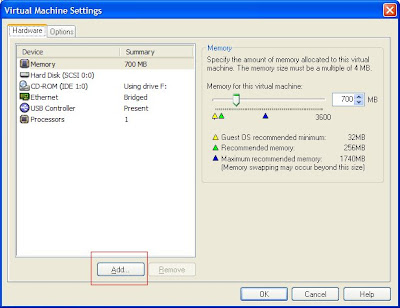 5. Select Hard Disk from the Add Hardware wizard from VMWare Server console & click next to continue further.
5. Select Hard Disk from the Add Hardware wizard from VMWare Server console & click next to continue further.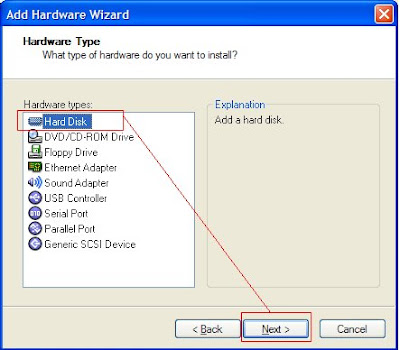 6. Select “Create a new Virtual Disk” and click next to continue
6. Select “Create a new Virtual Disk” and click next to continue 7. Select a Disk Type – always go with the recommended configuration by VMWare (here I selected as recommended – SCSI) and click next
7. Select a Disk Type – always go with the recommended configuration by VMWare (here I selected as recommended – SCSI) and click next 8. Specify Disk capacity – in my case, i selected 10GB, and I am not selecting “Allocate all disk space now” as it’s always have a advantage, it will use the host filesystem as the file system grows. Click Next to continue.
8. Specify Disk capacity – in my case, i selected 10GB, and I am not selecting “Allocate all disk space now” as it’s always have a advantage, it will use the host filesystem as the file system grows. Click Next to continue.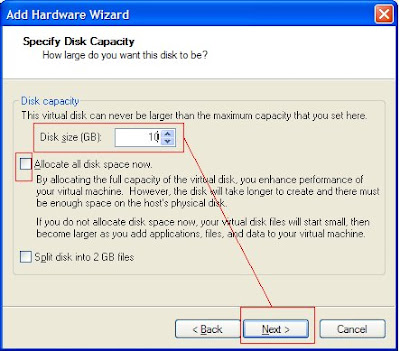 9. Specify Disk File, Location on your local hard disk and click Finish, to complete the Wizard.
9. Specify Disk File, Location on your local hard disk and click Finish, to complete the Wizard.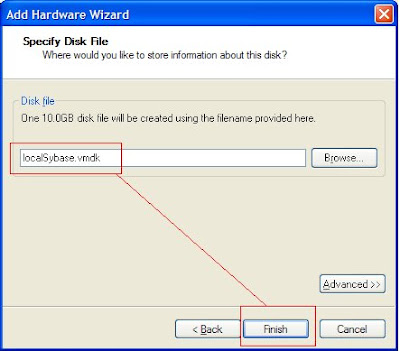 10. You can see the new add disk, Hard Disk 2. You can start the Operating system, from the VMWare Console to setup the hard disk from the operating system level.
10. You can see the new add disk, Hard Disk 2. You can start the Operating system, from the VMWare Console to setup the hard disk from the operating system level.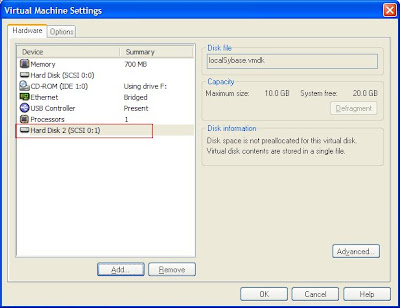 Your new disk is ready at hardware level (Virtual Machine ;-) )
Your new disk is ready at hardware level (Virtual Machine ;-) ) SYBASE ASE on Linux Enterprise Edition
****************************
More Information
****************************
(+) You can download Sybase ASE Express for Linux for free, it as limits like 1 CPU, 5GB Database...etc ->More Information on SYBASE ASE
http://download.sybase.com/presentation/linux_training/QUICKSTART/ASE.html
Sybase ASE Express Online - Training Guide for
Installation, Administration & Programming.
http://download.sybase.com/presentation/linux_training/
For Product Manuals
http://sybooks.sybase.com/nav/base.do
Let me finish the Installation, and soon will update :-)
Ravi Prakash
Thursday, July 24, 2008
Oracle Block Size :: Larger vs. Small data block – OTN Forum
Very informative thread which gives you an idea about different opinions from senior oracle guru’s about choosing an appropriate block size.
Well, for setting up Database block size, I always go with Vendor Application team with the proposals, as they are the best to decide which one to use with their application.
My recent setups, I stick to 8K in size, and it’s the default from Oracle as well. I need to concentrate more on this, from now.
Thursday, July 17, 2008
emctl resetTZ agentTZ
set to US/EasternOracle Enterprise Manager 10g Database Control Release 10.2.0.4.0Copyright (c) 1996, 2007 Oracle Corporation. All rights reserved.Updating /u01/app/oracle/product/10.2.0/db_1/rac1_devdb1/sysman/config/emd.properties...Time zone set to US/Eastern.
To complete this process, you must either:
connect to the database served by this DBConsole as user 'sysman', and execute:
SQL> exec mgmt_target.set_agent_tzrgn('rac1.mycorpdomain.com:3938','US/Eastern')
-- or --
connect to the database served by this DBConsole as user 'sys', and execute:
SQL> alter session set current_schema = SYSMAN;SQL> exec mgmt_target.set_agent_tzrgn('rac1.mycorpdomain.com:3938','US/Eastern')
***************************************************************
rac1-> sqlplus / as sysdba
SQL*Plus: Release 10.2.0.3.0 - Production on Fri May 9 17:27:37 2008
Copyright (c) 1982, 2006, Oracle. All Rights Reserved.
Connected to:Oracle Database 10g Enterprise Edition Release 10.2.0.3.0 - ProductionWith the Partitioning, Real Application Clusters, OLAP and Data Mining options
SQL> alter session set current_schema = SYSMAN;
Session altered.
SQL> exec mgmt_target.set_agent_tzrgn('rac1.mycorpdomain.com:3938','US/Eastern')
PL/SQL procedure successfully completed.
SQL>
rac1-> emctl start dbconsole devdb1TZ set to US/EasternOracle Enterprise Manager 10g Database Control Release 10.2.0.3.0Copyright (c) 1996, 2006 Oracle Corporation. All rights reserved.http://rac1.mycorpdomain.com:1158/em/console/aboutApplicationStarting Oracle Enterprise Manager 10g Database Control ............................. started
Logs are generated in directory /u01/app/oracle/product/10.2.0/db_1/rac1_devdb1/sysman/log
Oracle Forum - that i always like to see updates
Replies: 508 - Pages: 34 [ 1 2 3 4 5 Next ] - Last Post: Feb 18, 2008 1:23 PM by: RACER
2. Larger vs. Small data block
Replies: 451 - Pages: 31 [ 1 2 3 4 5 Next ] - Last Post: Jul 13, 2008 10:44 PM by: Niall Litchfield
Wednesday, July 16, 2008
Monday, June 09, 2008
Wednesday, April 09, 2008
orainstRoot and root.sh
Why do you run orainstRoot and ROOT.SH once you finalize the Installation?
orainstRoot.sh needs to be run to change the Permissions and groupname to 770 and to dba.
Root.sh (ORACLE_HOME) location needs to be run to create a ORATAB in /etc/oratab or /opt/var/oratab in Solaris and to copy dbhome, oraenv and coraenv to /usr/local/bin.
orainstRoot.sh
[root@oracle11g ~]# /u01/app/oraInventory/orainstRoot.sh
Changing permissions of /u01/app/oraInventory to 770.
Changing groupname of /u01/app/oraInventory to dba.
The execution of the script is complete
root.sh
[root@oracle11g ~]# /u01/app/oracle/product/11.1.0/db_1/root.sh
Running Oracle 11g root.sh script...
The following environment variables are set as:
ORACLE_OWNER= oracle
ORACLE_HOME= /u01/app/oracle/product/11.1.0/db_1
Enter the full pathname of the local bin directory: [/usr/local/bin]:
Copying dbhome to /usr/local/bin ...
Copying oraenv to /usr/local/bin ...
Copying coraenv to /usr/local/bin ...
Creating /etc/oratab file...
Entries will be added to the /etc/oratab file as needed by
Database Configuration Assistant when a database is created
Finished running generic part of root.sh script.
Now product-specific root actions will be performed.
Finished product-specific root actions.
Thursday, March 13, 2008
Oracle 11g :: Creating Database with ASM using DBCA
Prerequisites
1. Oracle Software 11.1.0.6 should already installed on the server. (refer below url for step by step)
http://ravidba-oracle.blogspot.com/2008/07/oracle-11g-step-by-step-installation-on.html
2. ASM Instance should already be created & configured and should be up and running.
http://ravidba-oracle.blogspot.com/2008/03/oracle-11g-configuring-asm-for-oracle.html
Hardware/Software:
VMWare Virtual Node – 2 CPU, 1024 MB
Host Operating System – Windows XP Professional SP 3
Guest Operating System – Oracle Enterprise Linux 4 (Update 5)
Oracle RDBMS – 11.1.0.6
Oracle ASM Instance – 11.1.0.6
1. Run DBCA from a terminal login as Oracle user. You can use PUTTY from a HOST System as well by setting the DISPLAY for x-windows.
Select -> Create Database
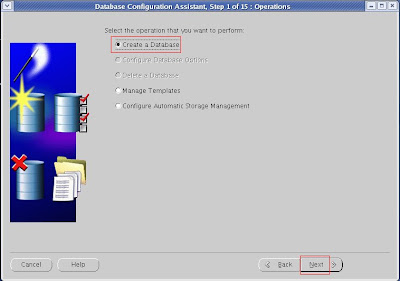 2. Select General Purpose, as this is just for testing purpose I want to use all the features of Oracle 11g and as well with the Example schemas. Real time i would prefer to create a seed database which would be CUSTOM DATABASE.
2. Select General Purpose, as this is just for testing purpose I want to use all the features of Oracle 11g and as well with the Example schemas. Real time i would prefer to create a seed database which would be CUSTOM DATABASE.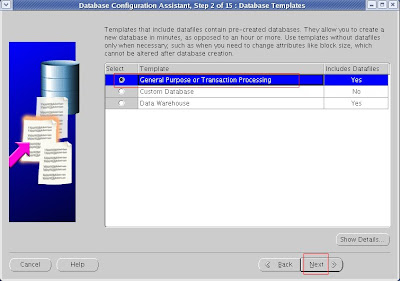 3. Database name: Here its db11g (You can choose as you like not more than 8 Characters)
3. Database name: Here its db11g (You can choose as you like not more than 8 Characters)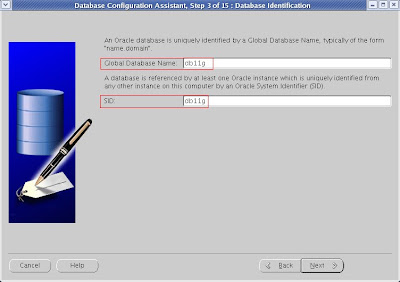 4. Enterprise Manager Option
4. Enterprise Manager Option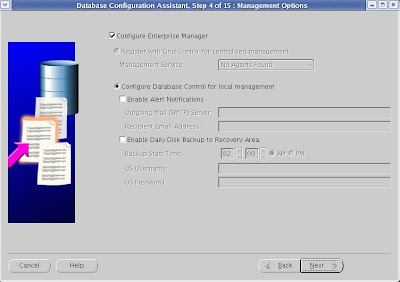 4 -1 . Warning : To configure Listener, so from a new terminal we need to run netca, please follow below URL for step by step on this.
4 -1 . Warning : To configure Listener, so from a new terminal we need to run netca, please follow below URL for step by step on this.http://ravidba-oracle.blogspot.com/2008/03/oracle-11g-netca-listener-configuration.html
 Once you are done with NETCA configuring the LISTENER, Continue
Once you are done with NETCA configuring the LISTENER, Continue 5. I prefer to use same password (Just for testing Purpose and easy to remember)
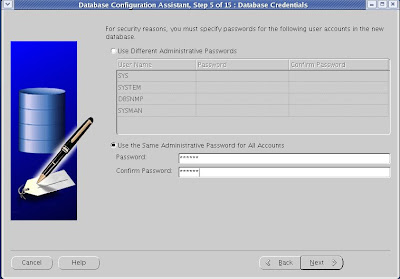 6. Select Automatic Storage Management (ASM). Make sure that ASM instance is up & running and the LISTENER associated with it should be running as well.
6. Select Automatic Storage Management (ASM). Make sure that ASM instance is up & running and the LISTENER associated with it should be running as well.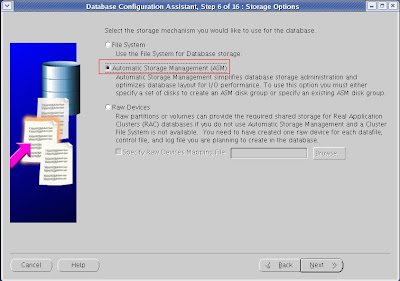 7. ASM - SYS password "It should be same as what you entered when setting up ASM Instance"
7. ASM - SYS password "It should be same as what you entered when setting up ASM Instance" 8. Select the Disk Group Name which you would like your new database to use. Make sure that the disks are mounted and the Redundancy as set according to your needs.
8. Select the Disk Group Name which you would like your new database to use. Make sure that the disks are mounted and the Redundancy as set according to your needs. 9.Use Oracle-Managed Files - Location of the Database Area "+DATA" which it keeps all the datafiles, controlfiles, archive etc.
9.Use Oracle-Managed Files - Location of the Database Area "+DATA" which it keeps all the datafiles, controlfiles, archive etc.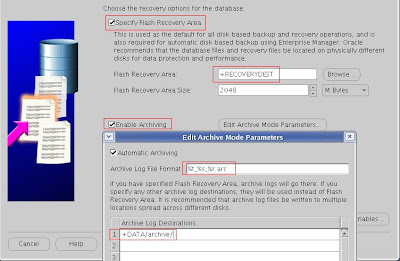 11. Select Sample Schemas
11. Select Sample Schemas 12. Memory Management - I prefereed to use Automatic Memory Management to test Oracle 11g. As default it takes 40%, I set it to 28%. Rest of the tabs, i left default.
12. Memory Management - I prefereed to use Automatic Memory Management to test Oracle 11g. As default it takes 40%, I set it to 28%. Rest of the tabs, i left default.I have my new Oracle 11g database with ASM as storage, and what all remained is i need to test the new features of Oracle 11g and to gain hands on - and plan to give Oracle 11g Upgrade for Administrators.
Wish me luck - Ravi Prakash
Wednesday, March 12, 2008
Oracle 11g :: netca (Listener Configuration for Oracle 11g Database)
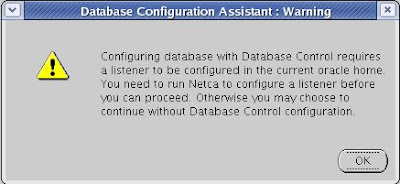 So planned to document this and of course this is one of the part of Oracle 11g Installation.
So planned to document this and of course this is one of the part of Oracle 11g Installation.1. Open a terminal as a Oracle user and run netca.
Select -> Listener Configuration
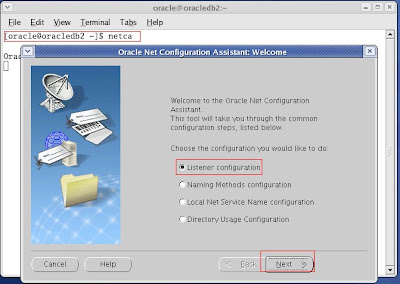 2. Select Add, as we are going to create a LISTENER for a new setup. If we have any existing listener running on the Server, remain options will be highlight like "delete" "re-configure" etc.
2. Select Add, as we are going to create a LISTENER for a new setup. If we have any existing listener running on the Server, remain options will be highlight like "delete" "re-configure" etc.








